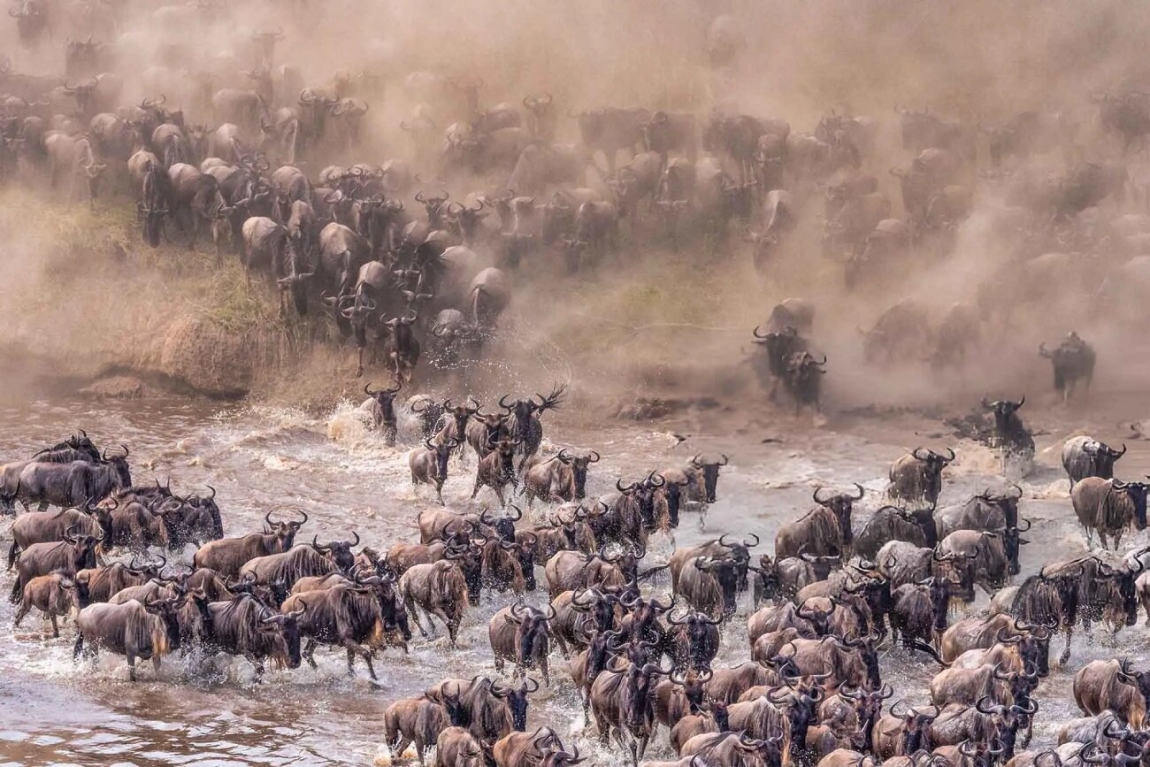What is The Great Migration in Tanzania
The Annual Great Migration in Tanzania is a breathtaking natural phenomenon where millions of wildebeest, accompanied by zebras and gazelles, journey across the vast plains of East Africa in search of fresh grazing and water. This cyclical odyssey, driven by the rhythm of the seasons and the relentless pursuit of survival, takes these magnificent creatures from the fertile plains of the Serengeti in Tanzania to the lush grasslands of the Maasai Mara in Kenya, and back again.
This incredible spectacle is not without its drama, as predators like lions, cheetahs, leopards, and crocodiles lie in wait, eager to seize their opportunity for a feast. The struggle for survival plays out on the grand stage of the African savannah, with dramatic chases, intense battles, and heartbreaking losses. But it is also a story of resilience, adaptation, and the unwavering determination to continue the circle of life.
This captivating display of nature’s raw power and delicate balance draws wildlife adventurers from across the globe, eager to witness the thundering hooves of countless animals, painting the horizon with dust clouds and filling the air with the sounds of a million lives in motion. The Great Migration in Tanzania is a once-in-a-lifetime experience that will forever leave you humbled and inspired by the sheer magnitude and beauty of the natural world.
When is The Great Migration in Tanzania
The best time to see the Great Migration in Tanzania is during the dry season between July and early October. During this time, the wildebeest and other herbivores make the dramatic river crossings of the Grumeti and Mara Rivers, which is one of the most iconic parts of the migration.
Here’s a more detailed breakdown of the Great Migration in Tanzania throughout the year:
December to March: Calving Season in Southern Serengeti. Witness the miracle of life as thousands of wildebeest calves are born in the southern plains. This is also a prime time for predator sightings, as lions, cheetahs, and hyenas are drawn to the abundance of vulnerable prey.
April to May: The Long Trek North. As the rains begin to shift, the herds embark on their journey northwards, moving through the central and western Serengeti. This is a great time to witness vast herds on the move and enjoy the lush green landscapes that follow the rainy season.
June and July: The Grumeti River Crossing. The herds gather in the northern Serengeti, preparing for one of the most dramatic events of the migration – the crossing of the Grumeti River. Witness the tension and excitement as the wildebeest face the treacherous waters, often under threat from lurking crocodiles.
July to October: Mara River Crossings. This is the peak season for the Great Migration in Tanzania, as the herds reach the Mara River and make their daring crossings into Kenya. The sight of thousands of animals plunging into the crocodile-infested waters is a thrilling and unforgettable experience.
September to October: The Return Journey. After grazing in the Maasai Mara, the herds begin their return journey south, crossing back into the northern Serengeti. This is another opportunity to witness river crossings and the drama of predator-prey interactions.
November to December: The Short Rains. As the short rains begin, the herds continue their southward migration, eventually returning to the southern Serengeti for the next calving season.

